
The Heteropterygidae is a family of stick insects belonging to the suborder Euphasmatodea. Species can be found in Australasia, East and Southeast Asia. About 150 valid species have been described.

The Obriminae are the most species-rich subfamily of the Phasmatodea family Heteropterygidae native to Southeast Asia. It is divided into two tribe.

The Obrimini are the most species-rich tribe of the Phasmatodea family of the Heteropterygidae native to Southeast Asia.
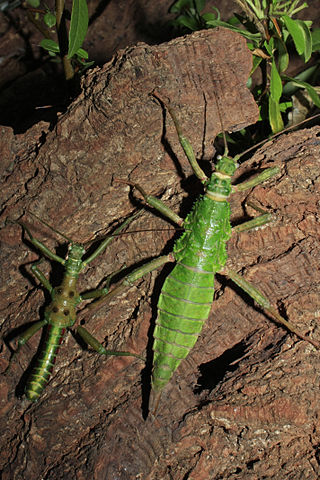
Mearnsiana bullosa, occasionally referred to by the common name Manobos stick-insect,is a species of stick insect in the family Heteropterygidae. It is native to the Philippine islands of Mindanao and Leyte. Until 2023 it was the only described representative of the genus Mearnsiana.

Aretaon is a genus of stick insects native to Borneo and the Philippine island Palawan.
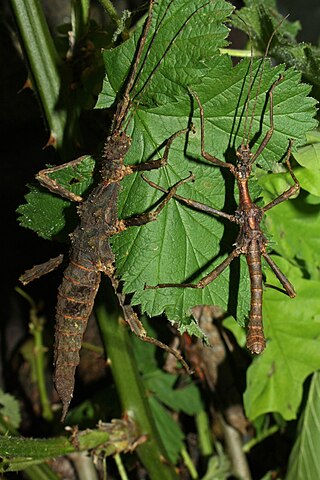
Trachyaretaon is a genus of stick insects native to the Philippines.

Brasidas is a genus of stick insects that is native to the Philippines and is named after the Spartan general Brasidas
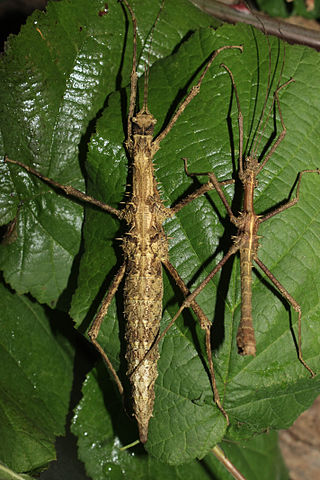
Obrimus is a stick insect genus native to the Philippines. It is type genus for the tribe and the subfamily in which it is listed.

Eubulides is a stick insect genus native to the Philippines.

Theramenes is a genus of medium-sized stick insects in the tribe Obrimini, which is native to the Philippines and to the Indonesian Talaud Islands.

Trachyaretaon carmelae is a species of stick insects. It is one of the largest in the subfamily Obriminae.

Trachyaretaon echinatus is the type species of the genus Trachyaretaon in the order of the stick insects.
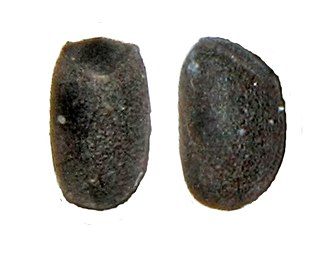
Stenobrimus is a genus of medium-sized stick insects native to the Philippines.

Brasidas cavernosus is a representative of the stick insects native to the Philippine island Luzon. It is considered one of the largest species in the subfamily Obriminae.
Pterobrimus is a monotypic genus of stick insects (Phasmatodea), containing the species Pterobrimus depressus, which is native to Fiji.
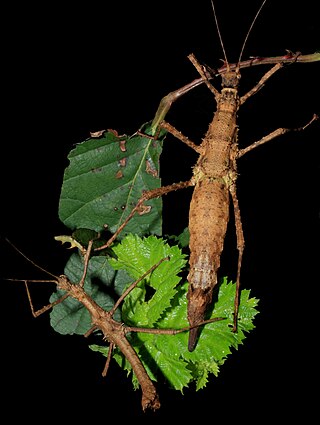
Brasidas lacerta is a species of stick insect in the family Heteropterygidae which is endemic to Mindanao. Due to its extreme variability, and the nymphs being spinier than to the adults, the species has been described under other names, resulting in a total of seven synonyms.

Obrimus bicolanus is a stick insect species from the family of the Heteropterygidae native to the southeast of the Philippine island of Luzon, more precisely in the Bicol Region.

Obrimus bufo is a stick insect species from the family of the Heteropterygidae native to the Philippine island of Luzon.

Obrimus mesoplatus is a stick insect species from the family of the Heteropterygidae native to the Philippine island of Luzon.
Obrimus quadratipes is a stick insect species from the family of Heteropterygidae native to the Philippine island of Luzon.
















